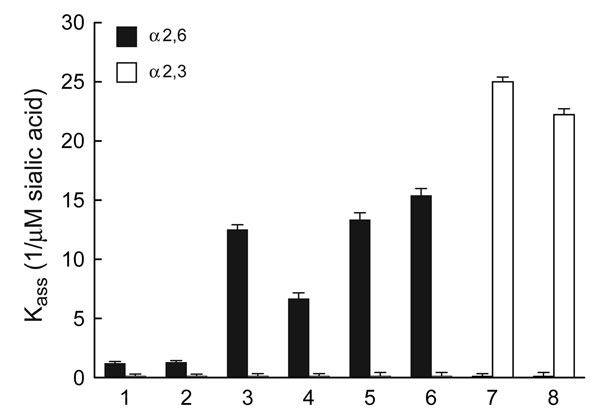Volume 16, Number 2—February 2010
Dispatch
Extensive Mammalian Ancestry of Pandemic (H1N1) 2009 Virus
Figure

Figure. Receptor specificity of human, pandemic, swine, and avian H1 influenza viruses. Association constants (Kass, 1/μM sialic acid) of virus complexes with sialylglycopolymers conjugated to 3′-sialyllactose (avian-like Neu5Acα2,3Gal-containing receptor, white bars) and 6′-sialyllactosamine (human-like Neu5Acα2,6Gal-containing receptor, black bars). Higher Kass values indicate stronger binding. Values are the mean ± SD of 4 independent experiments (1/μM sialic acid). 1, A/Brisbane/59/2007; 2, A/New Jersey/15/2007; 3, A/California/04/2009; 4, A/Tennessee/1-560/2009; 5, A/swine/North Carolina/007270/2008; 6, A/swine/Iowa/003479/2009; 7, A/mallard/Alberta/66/2007; 8, A/mallard/Alberta/496/2008.
Page created: December 13, 2010
Page updated: December 13, 2010
Page reviewed: December 13, 2010
The conclusions, findings, and opinions expressed by authors contributing to this journal do not necessarily reflect the official position of the U.S. Department of Health and Human Services, the Public Health Service, the Centers for Disease Control and Prevention, or the authors' affiliated institutions. Use of trade names is for identification only and does not imply endorsement by any of the groups named above.